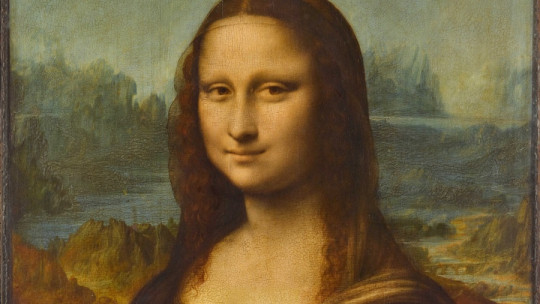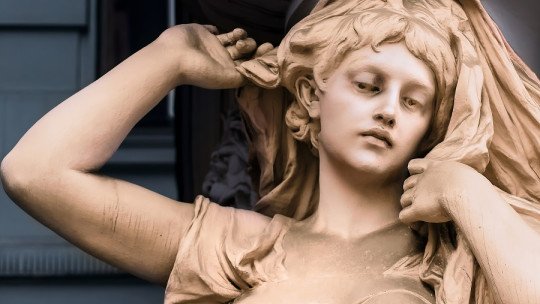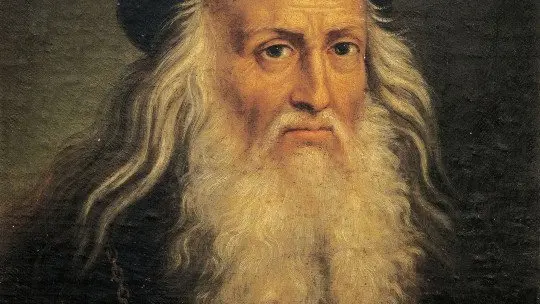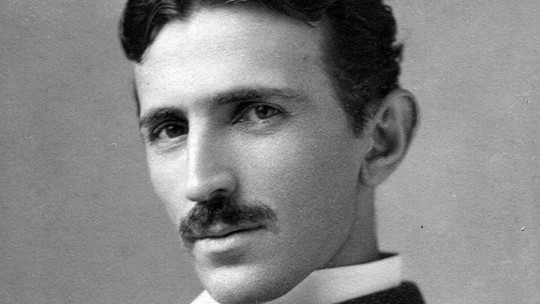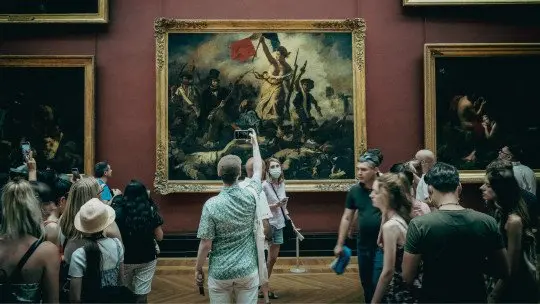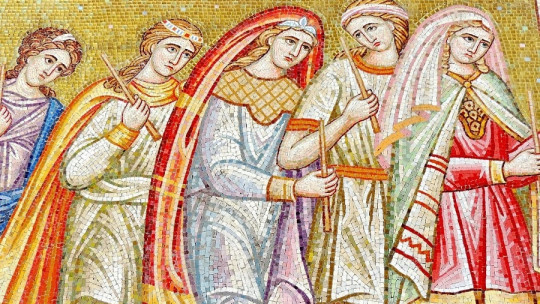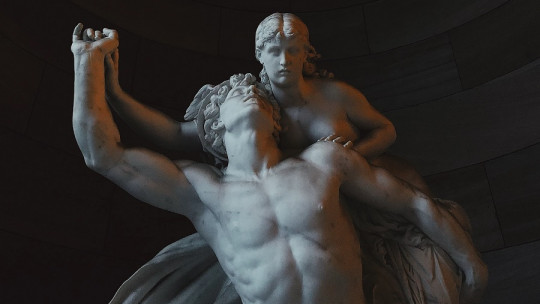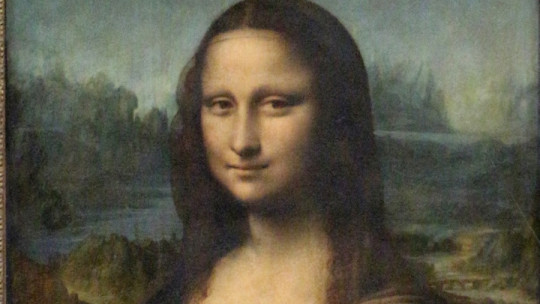
A real lover who poses like the Virgin, the most notorious robbery in history, a self-portrait in an oil can… The history of art is full of anecdotes and, in reality, nothing is what it seems. Below, we present a list with some of the most succulent curiosities about famous works of art explained in detail.
10 curiosities about famous works of art
Here are 10 curiosities that hide some of the most famous works of art in history.
1. The most famous painting in the world
Definitely, The Mona Lisa by Leonardo da Vinci is one of the works that receives the most visitors. Have you ever wondered why? And this little board wasn’t always so popular. In fact, Before 1911, people who visited the Louvre hardly noticed it
But it happened that, on the morning of Tuesday, August 22, 1911, they realized that the Monna Lisa was not in its place. She was lost. And it was like that for no less than two years; It was not located until December 1913, when the author of the notorious robbery was found: Vincenzo Peruggia.
Peruggia had worked at the Louvre and knew very well how the paintings were hung. What’s more, he had in his possession a worker’s smock, which he put on to disappear. Let’s remember that we are talking about 1911 and, therefore, there were no security cameras that could record the theft. Thus, on Monday, August 21, the day the museum was closed, Peruggia calmly picked up The Gioncondahe hung it under his arm and left the Louvre, previously hiding it under the worker’s coat. Nobody noticed… until the next day.
The news of the theft spread like wildfire. Guillaume Apollinaire ended up in jail accused of the robbery, and his colleague Pablo Picasso was also part of the list of suspects. The newspapers fed gossip and legends. When the painting was found in a small hotel in Florence, where Peruggia had summoned the antiquarian Alfredo Geni to sell him the work, The Mona Lisa It was already a true myth. A myth whose fame (justified or not) has only grown until today.
2. The scream that is not a scream
We all have in mind the spectacular canvas The Scream, by the Norwegian painter Edvard Munch: in front of a landscape that seems to melt, a strange figure puts his hands to his face and screams. Right? Well no. Yes there is a figure, Yes, he has a strange appearance, like a death mask or a mummy, and he does put his hands on his face… but he doesn’t scream

In reality, the name of the painting refers to the scene that inspired the painting. Munch himself describes it in the following way in his diary: “I was walking along a trail with two friends; the sun set. Suddenly, the sky turned blood red, I stopped and leaned on a fence, dead tired: blood and tongues of fire lurked over the dark blue of the fjord and the city. My friends continued and I stood still, shaking with anxiety. I felt an infinite scream that went through nature…”
That is, the cry that gives its name to the painting It is the powerful cry of nature, often destructive, which shakes the painter and makes him stagger. Of course, a very different vision than the one that has become popular about the work.
3. The blasphemous corpse
In 1601, Michelangelo Merisi, better known as Caravaggio, received a commission from the church of Santa Maria della Scala, in Rome. You must paint a picture that reflects the transit of the Virgin, surrounded by the apostles No sooner said than done. Caravaggio took her brush and a few models, and made a monumental canvas, where Mary appears recumbent and the apostles guarding her and lamenting her death.
So far, everything seems in place. But we already know that Caravaggio was one of the great naturalists of the Baroque, who took his models from the poorest neighborhoods of Trastevere. Caravaggio shows us vulgar, ragged and dirty characters on canvas; What’s more, the recumbent figure of the Virgin looks like a corpse just taken out of the morgue. In fact, Some rumors suggested that, in fact, the painter had taken a prostitute drowned in the Tiber as his model for Mary (which, coming from Caravaggio, could be perfectly true).
Let’s finish! That was a mockery decorum ecclesiastical, which required rules when representing sacred figures. As expected, the work was rejected. Luckily, not everyone had the same opinion. An astonished Rubens was lucky enough to see the work and was absolutely captivated by it. The artist convinced the Duke of Mantua to buy the canvas, and we can currently enjoy it in the Louvre Museum.
4. Clara Peeters takes a portrait… in an oil can
It is common for painters to portray themselves in their works. It is a fairly widespread custom since the Renaissance; For example, Botticelli included the portrait of him among the crowd of his Adoration of the Magi (1475-76), and Hieronymus Hieronymus did the same in his Garden of delights (1503-15), although, to be fair, we have to say that the identity of the latter is not confirmed.
Clara Peeters (1594? -?) was a Flemish painter famous for her exquisite still lifes In many of them he included his own image, reflected on the surface of some objects. This is the case of one of the still lifes preserved by the Prado Museum, dated 1611, and which shows a table with delicious delicacies (cookies, breads and nuts), a vase with flowers, a glass of wine and an oil can in which If we look closely, we can see the artist’s face, reflected in the metal.
Clara’s virtuosity is evident in these details, since it is not easy to photograph oneself on the curved surface of an object. The artist perfectly masters the effects of light and the distortion that the sinuosities of the oil can cause in her portrait. If you go to the Prado, you can try to discover it.
5. The face of controversy
Who is the woman portrayed by Goya in duplicate, one dressed in oriental dresses and the other completely naked? We are referring, of course, to the famous Majascurrently preserved in the Prado Museum and which once belonged to the private collection of Manuel Godoy, prime minister of Charles IV.
In the inventory of the Godoy palace, the canvases appear listed as “gypsy” paintings, without further specifications The controversy began when the Inquisition itself summoned Goya to testify about the paintings and the person who had commissioned him. Rivers of ink began to flow. Was it the face of the famous Duchess of Alba that appeared looking defiantly (and also sensually) at the viewer?
This version was the most accepted by popular legend; However, the Duchess of Alba was already very ill at the time of the paintings. Could it be, then, that the sitter was someone else? Maybe Pepita Tudó, Godoy’s lover at the time? The comparison of the features of the Majas with the confirmed portraits of Pepita shows an extraordinary resemblance On the other hand, the Majas They were in the possession of Manuel Godoy; It seems entirely logical that the minister wanted to have an erotic portrait of his lover.
Despite assumptions, it has not yet been possible to confirm who the woman is who is posing flirtatiously and elegantly on a couch. Perhaps it is better this way, since the mystery of the Majas constitutes one of its greatest attractions.
6. Velázquez portrays his family
Velázquez painted his Adoration of the Magi during his time in Seville, when he was still in Francisco Pacheco’s workshop. It was precisely his daughter, Juana, that Velázquez married in 1618. The work, painted the following year, is, beyond the representation of the Epiphany, an example of fidelity and family love.
And it is that Velázquez captured the features of his wife Juana on the face of the Virgin Mary Not only that; It is known that the Baby Jesus was, in reality, his little daughter Francisca, born just a few months earlier. Velázquez himself would be the young character in the foreground, while the older king would be a portrait of his father-in-law and teacher, Francisco Pacheco. Something, on the other hand, was very common in the Baroque: the fusion of the sacred with everyday life, which brought the biblical characters enormously closer to the people.
7. Angelica’s “third breast”
Despite being a highly appreciated painter today, the truth is that Jean-Auguste-Dominique Ingres had quite a few detractors during his lifetime. The artist had a reputation for drawing impossible anatomies; the critics of the moment were attacked by his Great Odalisque (1814), which they said had “several extra vertebrae.”
It is true that Ingres’ figures are not anatomically perfect. They have an almost gothic languor that makes them closer to the world of dreams than to tangible reality However, that is part of the charm of his work.
Some of his contemporaries did not think the same, as we have already seen. Another of his most famous paintings, Roger frees Angelica (1819), raised the same heated criticism as his Odalisque. Let’s look at the date: 1819, the height of the neoclassical craze in France. The figure of Angelica, chained to a rock and saved by Roger from certain death, displays on her neck… a third breast! Or, at least, that’s how the painter’s contemporaries wanted to see it. The confusion comes from the protruding lump that the young woman shows under her chin and in the roundness of her neck. Could it be that Angélica had a tumor? Who knows…
8. A real lover in the role of the Virgin
In the Melun Diptych (1450), both parts of which are currently preserved in different museums, Jean Fouquet represents the Virgin offering her breast to the Child Jesus to be fed, in an iconography known as Galactotrophous (Virgin of milk). This type of representations were quite common since the first centuries of the Middle Ages, but Jean Fouquet gives it a twist and represents a Virgin of suggestive eroticism.
María is dressed in the fashion of the time; Her forehead is shaved, as are her eyebrows. Her skin is snowy and soft, and her breasts (actually only one, since the other is uncovered) are imprisoned in a blue bodice. An elegant ermine cape falls down her back… The earthly beauty and evident eroticism of this Virgin are a real shock for the viewer. And if we take into account the legend that claims that the model is none other than Agnès Sorel, the favorite of King Charles VII of France, everything gets even more complicated. A real lover playing Virgin Mary!
The identity of the lady has not been confirmed, but it turns out that one of the clients of the diptych, who is represented in the other panel, was the executor of Agnès’ will, who died very young, at the age of twenty-eight, supposedly poisoned. Do you want more coincidences? The date of execution of the diptych corresponds to the death of her favorite. Draw your own conclusions.
9. The family must be united
Napoleon commissioned the famous neoclassical painter Jacques-Louis David to create a colossal canvas to immortalize his rise to power. David captured the moment when Napoleon, already crowned, in turn imposes the crown on his wife, Queen Josephine. It is a grandiose vision of no less than 667 x 990 cm, and is currently in the Louvre Museum.
Among the crowd that comes to the coronation, we can see, in a prominent box, the mother of the Great Corsican, contemplating her son with admiration. But the truth is that, in truth, María Letizia Ramolino had not attended the ceremony, due to certain family disagreements (it is said that the mother did not approve of the marriage of her son with Josefina…). Napoleon did not hesitate to ask David to include his mother among the attendees, because what image would he give to the people if he made his family troubles public? The Photoshop of the time.
10. Avignon is in Barcelona
Picasso’s famous painting has been considered The ladies of Avignon as the first entirely cubist painting. However, the composition is still, in some ways, experimental. Picasso tries formal solutions that, yes, are a clear precedent for the cubism that would come later.
The painting portrays five prostitutes… from Avignon, France? No; on Avinyó street (Aviñón), in Barcelona Let us remember that, in those years (1907) the young Picasso had settled in Barcelona. Thus, the name of the painting can lead to misunderstandings, especially considering that, later, the artist lived in France. If you ever drop by Barcelona, be sure to visit the street in question; It is located in the heart of the so-called Gothic Quarter, an area with a lot of charm and with many artistic gems to discover.

